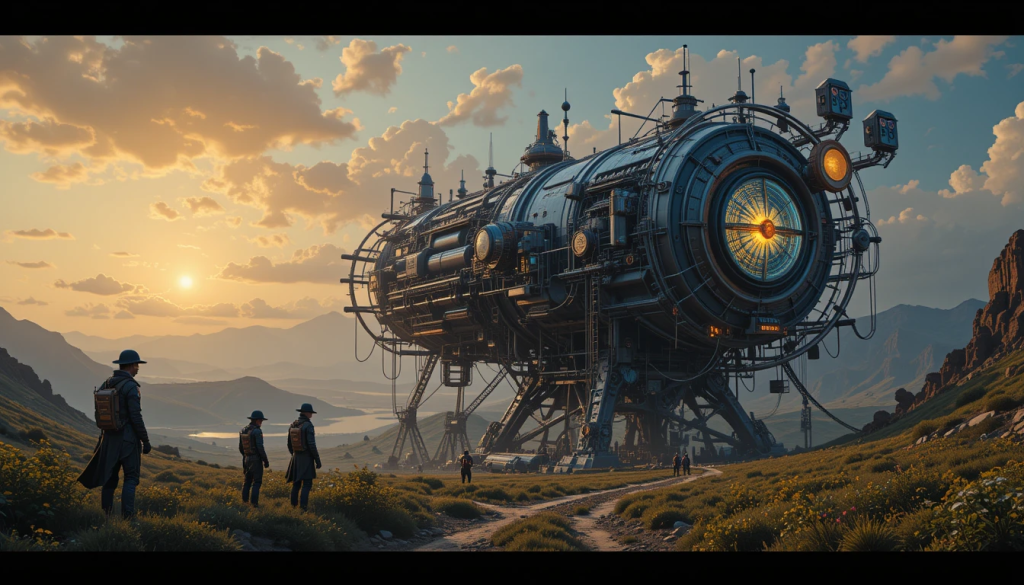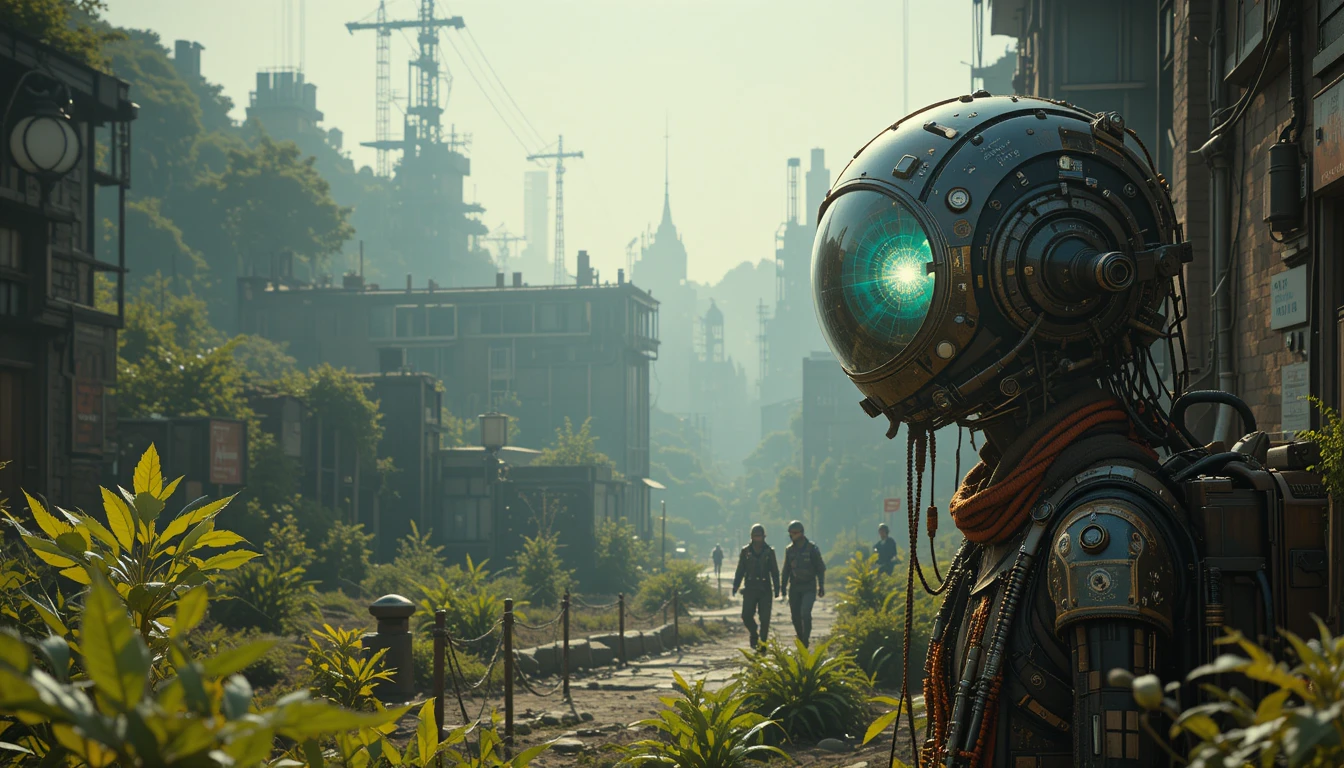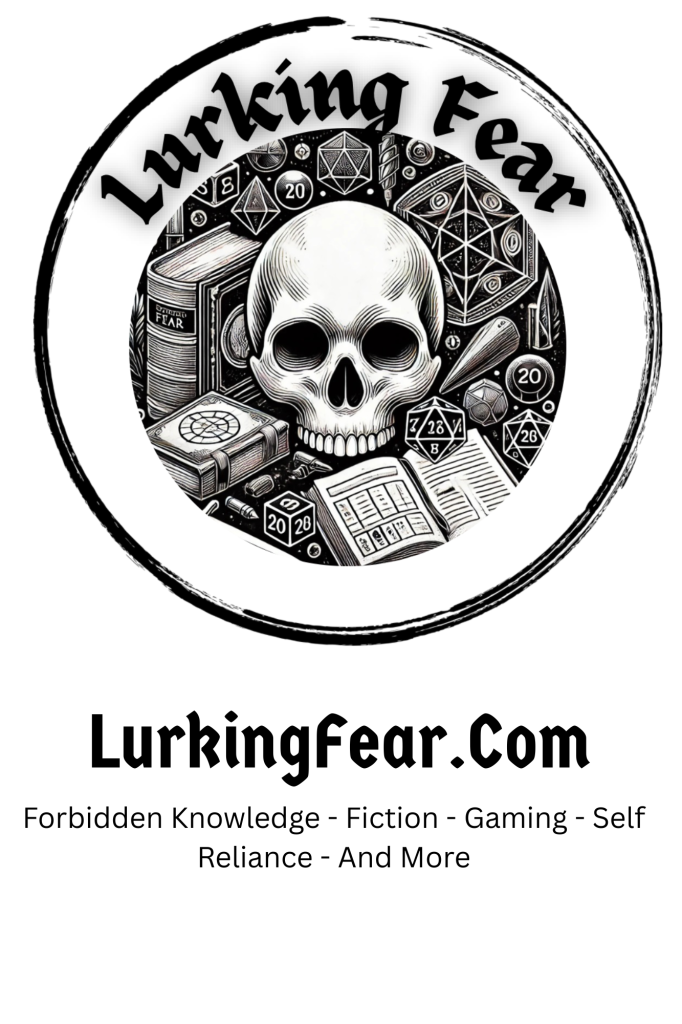
Solar Punk Books
From Lurking Fear Publishing | Sci-Fi, Horror, Gaming, And More
If you’ve been tracking the pulse of science fiction over the last decade, you’ve felt the shift. For years, our visions of the future have been dominated by a familiar palette: the rain-slicked neon noir of cyberpunk, the rusted, decaying machinery of post-apocalypse, and the grim, desolate grey of dystopia. These genres hold a powerful mirror to our anxieties about technology, capitalism, and environmental collapse. But what happens when we grow weary of just staring into the abyss? What if we want to build something beautiful on the edge of it instead?
Enter Solarpunk.
More than just a subgenre of science fiction, Solarpunk is a burgeoning aesthetic, a design philosophy, and a proactive movement. It’s a defiant, hopeful breath of fresh air in a genre often choked on smog and despair. It asks a revolutionary question: What if the future isn’t something to be feared, but something to be grown?
Here at Lurking Fear Publishing, while we have a deep and abiding love for the shadows that make horror and dark sci-fi so compelling, we are also fascinated by the light. Solarpunk represents a vital and necessary counter-narrative, and its rise signals a profound change in our collective imagination. Let’s dive into the green, glowing heart of this optimistic movement.
What Exactly Is Solarpunk?
At its core, Solarpunk is a vision of a future that is sustainable, equitable, and beautiful. It seamlessly merges technology with nature, not in a domineering way, but in a symbiotic relationship. Imagine cities where skyscrapers are draped in vertical gardens and topped with gleaming solar panels, where airships powered by hydrogen glide silently between art nouveau spires, and where communities are built on principles of cooperation and care rather than extraction and exploitation.
The “solar” isn’t just literal—it represents renewable energy, but also a sense of openness, transparency, and energy positivity. The “punk” is just as crucial. This isn’t a passive, utopian daydream. It’s punk because it is actively rebellious against the status quo of fossil fuels, hyper-capitalism, and oppressive structures. It’s about DIY ethics, decentralized power (both electrical and political), and grassroots innovation.
Key pillars of Solarpunk include:
-
Sustainability & Symbiosis: Technology works with nature, not against it. Buildings clean the air, generate their own power, and collect their own water. Agriculture is local, organic, and integrated into urban spaces.
-
Community & Justice: Solarpunk futures are inherently social. They prioritize community well-being over individual greed, often exploring post-scarcity economics, universal basic income, and restorative justice. It’s a future where everyone has a place.
-
Art Nouveau & DIY Aesthetic: Forget sterile, white, minimalist futurism. Solarpunk aesthetics are ornate, handcrafted, and infused with life. Think stained glass solar cells, flowing organic forms, and a blend of advanced tech with traditional craftsmanship. It’s a future with a soul and a history.
-
Hopeful, But Not Naive: This is critical. Solarpunk isn’t about ignoring our problems. It’s about acknowledging the immense challenges we face—climate change, inequality, political strife—and choosing to envision and work towards a world that has overcome them. The struggle is part of the story.
The Roots of a Green Future
While the term “Solarpunk” is relatively new, coined in the mid-2000s and gaining traction through blogs and online communities, its philosophical roots run deep.
It’s the logical evolution of the utopian traditions in science fiction, from Sir Thomas More to William Morris. It draws direct inspiration from the biomorphic architecture of Antoni Gaudí and the visionary work of thinkers like Buckminster Fuller. You can see its seeds in the serene, ecological science fiction of Ursula K. Le Guin (especially in The Dispossessed and The Word for World is Forest) and the intricate, world-building of Frank Herbert’s Dune, which, despite its feudal darkness, is a masterclass in designing a society around a scarce resource.
Solarpunk is also a direct response to its predecessors. It stands in conversation with—and opposition to—Cyberpunk. Where Cyberpunk asks, “What does technology and corporate power do to the human soul?”, Solarpunk asks, “How can we use technology to heal the human soul and the planet?”
Why Now? The Cultural Moment for Solarpunk
Art doesn’t exist in a vacuum. The rise of Solarpunk is a direct reflection of our current cultural and climate moment.
We are living in an age of acknowledged crisis. The headlines are a relentless barrage of climate disasters, political polarization, and social unrest. Dystopian fiction can feel less like a warning and more like a documentary. This constant immersion in “doom and gloom” leads to a well-documented phenomenon: apocalypse fatigue or climate despair.
Solarpunk emerges as the antidote to this fatigue. It is a act of radical hope. In a world telling us to be afraid, to be cynical, to give up, Solarpunk dares to imagine a way through. It provides a blueprint for the soul, a necessary target for our efforts. As the saying goes, “It’s easier to imagine the end of the world than the end of capitalism.” Solarpunk forces us to imagine the end of capitalism, and what comes after.
It’s a movement perfectly suited for the digital age, blossoming on platforms like Tumblr, Instagram, and Pinterest, where artists and writers from around the world can share a single vision of a green future, building the aesthetic collectively.
Solarpunk in Practice: Beyond the Page
The most exciting aspect of Solarpunk is that it isn’t confined to fiction. It’s a living, breathing movement.
-
In Literature: Authors like Becky Chambers (the Monk & Robot series, The Long Way to a Small, Angry Planet) are defining the genre with their focus on community, kindness, and finding one’s place in a universe. Lurking Fear Publishing is always on the lookout for stories that capture this spirit—tales where the conflict arises not from mustache-twirling villains, but from the complex challenges of building a better world. Check out our submissions page if you’re writing these kinds of futures.
-
In Gaming: Games are a perfect medium for Solarpunk, allowing players to build these worlds themselves. Titles like Terra Nil (a game about reversing environmental damage to restore ecosystems) and Cloud Gardens (a post-apocalyptic gardening game about rewilding concrete ruins) are pure Solarpunk gameplay. Even massive RPGs like Horizon Forbidden West feature tribal societies living in harmony with nature amidst the ruins of a high-tech past.
-
In Design & Architecture: Real-world architects and designers are taking cues from the Solarpunk aesthetic. Concepts for green cities, vertical farms, and carbon-negative buildings are moving from science fiction to blueprints. The Bosco Verticale (Vertical Forest) in Milan, Italy, is a living example of a Solarpunk-inspired structure.
-
In Activism: The principles of Solarpunk—decentralization, renewable energy, community resilience—are directly applicable to grassroots activism. It provides a positive, tangible vision that environmental and social justice movements can rally behind.

Solar Punk Books
The Challenge of Solarpunk Storytelling
One common critique of Solarpunk is that it lacks conflict, the essential engine of narrative. “If everything is perfect, where’s the story?”
This misunderstands the genre. A Solarpunk world isn’t a perfect, static utopia. It’s a dynamic, ongoing process. The conflict isn’t eliminated; it’s transformed. Stories in this genre can focus on:
-
The Struggle to Build: The monumental effort of creating such a society from the ashes of our current one.
-
Maintaining Balance: How does a community handle disputes, scarce resources, or external threats without resorting to old, violent paradigms?
-
Internal & Philosophical Conflicts: What are the trade-offs between individual freedom and community good? How do we define progress? What does it mean to be human in a world seamlessly integrated with nature and technology?
-
The Legacy of the Past: Dealing with the remnants of the old world—both physical and ideological.
These are rich, complex, and deeply human sources of conflict. They move beyond simple good vs. evil and into the more challenging, and ultimately more rewarding, terrain of how we choose to live together.
A Solarpunk Future is a Choice
Solarpunk is more than a trend; it’s a necessary reorientation of our compass. It provides the maps we so desperately need to navigate away from the cliffs we’re speeding towards. By filling our imaginations with images of green cities, clean energy, and compassionate communities, we make those things more achievable. We make them thinkable.
It aligns with our mission at Lurking Fear Publishing to explore all facets of speculative fiction. To understand the light, we must sometimes venture into the dark, and to truly appreciate the dark, we must know what it is we’re fighting to protect. Solarpunk gives us something to protect, something to fight for.
The future is not a predetermined path. It is a choice. Solarpunk is the active, rebellious, and beautiful choice to believe that we can still grow a world worth inheriting.
So, let’s get growing.
Solarpunk FAQ
Q: Is Solarpunk just “hippie” science fiction?
A: While it shares some values with environmentalism, Solarpunk is distinct. It actively embraces advanced technology (just used wisely), has a strong punk/DIY ethic, and is deeply engaged with solving complex socio-political problems, not just escaping them. It’s pragmatic and tech-positive.
Q: Where can I start reading Solarpunk fiction?
A: A great starting point is the anthology Solarpunk: Ecological and Fantastical Stories in a Sustainable World edited by Gerson Lodi-Ribeiro. Also, absolutely read Becky Chambers’ A Psalm for the Wild-Built. For shorter fiction, keep an eye on online magazines like Clarkesworld and Escape Pod, which frequently feature Solarpunk stories.
Q: Does Lurking Fear Publishing accept Solarpunk stories?
A: Absolutely! While we are known for horror and dark sci-fi, we are deeply interested in stories that explore all facets of the human experience, including hope and resilience. A well-crafted Solarpunk story with strong characters and compelling conflict would be a welcome addition to our slush pile. Review our guidelines here before submitting.
Q: Can Solarpunk have elements of other genres?
A: Definitely! Some of the most interesting works are hybrids. “Solarpunk horror” might explore the terrifying consequences of a failed geo-engineering project or a genetically engineered ecosystem running amok. “Solarpunk mystery” could involve a murder in a seemingly perfect community, forcing characters to question their entire system.
Q: How can I incorporate Solarpunk principles into my daily life?
A: Solarpunk is as much about practice as it is about theory. Start small: grow a garden (even a windowsill herb garden), support local co-ops and makers, learn to repair instead of replace, advocate for green spaces in your community, and engage in conversations about a positive future. It’s about building resilience and beauty where you are.
Q: What’s the opposite of Solarpunk?
A: The most direct aesthetic and philosophical opposite is often considered Atompunk or Dieselpunk, which glorify the energy systems and aesthetics of the mid-20th century that are at the root of our climate crisis. In a broader sense, its opposite is the cynical, exploitative, and ecologically destructive worldview that it seeks to overcome.
Lurking Fear Publishing is based in Columbus, Ohio, and is dedicated to bringing you the best in independent speculative fiction. Explore our catalog of science fiction, horror, and tabletop gamingtitles. Join the conversation and help us build the future of story.










